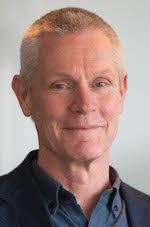Blog by Hugo Quené – Open art: Rudolf Stingel

During the Christmas holidays, I was introduced to the work of Rudolf Stingel (1956). I saw fascinating similarities in his work to Open Science, and especially to two of its themes: FAIR Data and Software, and Public Engagement.
FAIR Data and Software
In 1988, Stingel started working on “silver paintings”, large canvases with monochrome backgrounds, with silver paint and prints of textiles on them. The silver paintings (“data”) remained in galleries and museums (and with art dealers). But Stingel made his underlying “software” (method) publicly available, in a series of silkscreens and in a booklet both titled “Instructions” (1989), which anyone can use to make “a Stingel” themselves: “By publishing an instruction manual from which anyone can reproduce his paintings, Stingel questions the notion of authorship, dissolving the mystery that surrounds their creation,” according to a brochure.
Public Engagement
Stingel also later created artworks in which the public is even more clearly given the role of author and creator. In “Untitled” (2001), for example, all the walls of a room are completely covered with Celotex, a reflective insulation material. Visitors are encouraged to draw, write, or scratch on it:
“[This] work acts as a receptacle for signs left by visitors who are no longer present and whose traces it preserves, marking their passage,” according to the same brochure.
Open Art?
Stingel’s artworks themselves are precious, and not freely available, nor have I been able to find the text of the aforementioned Instructions online. All in all, then, Stingel’s work is not completely “open art”, yet it does pursue similar goals: more transparency and more engagement. I hope that continues to inspire us all in 2023 and beyond.
This blog was originally published here at uu.nl.

